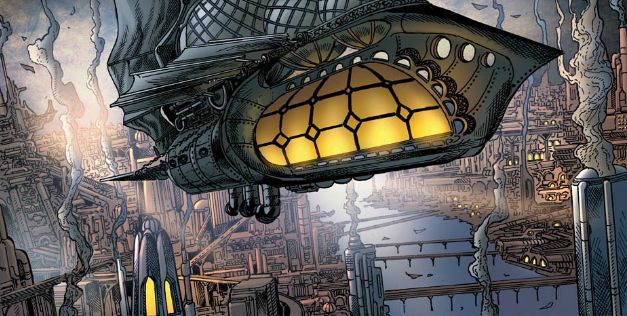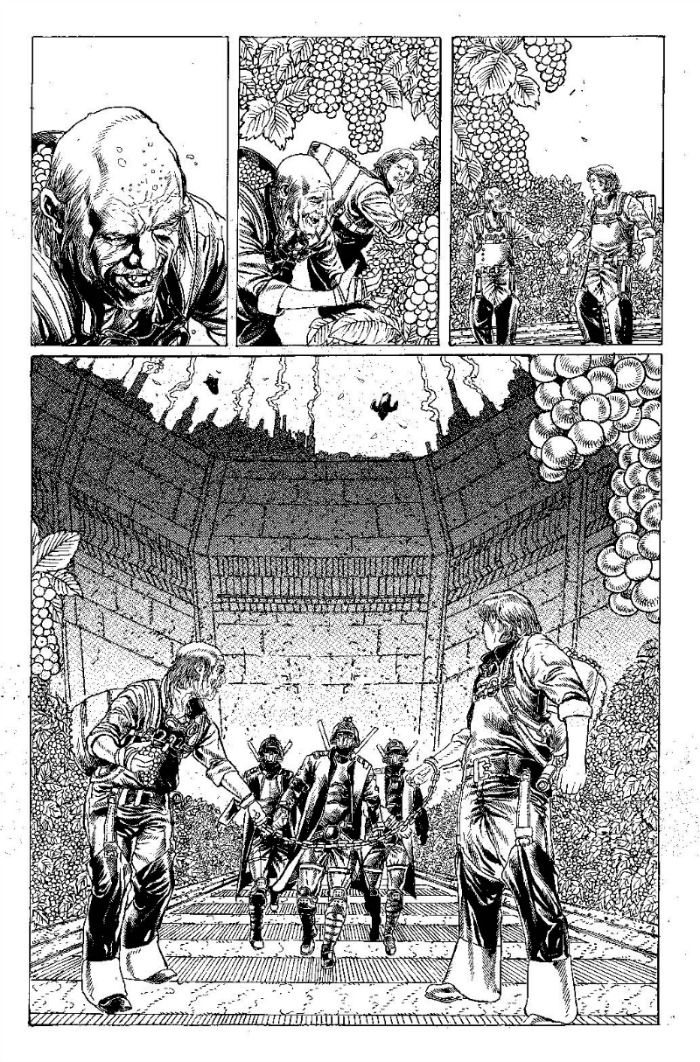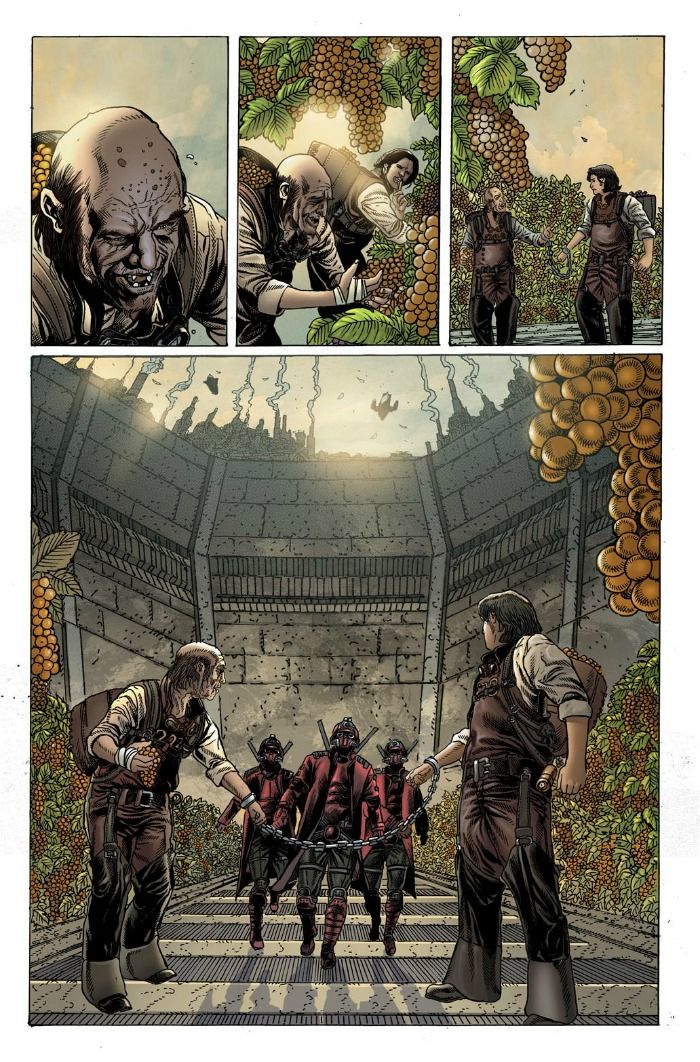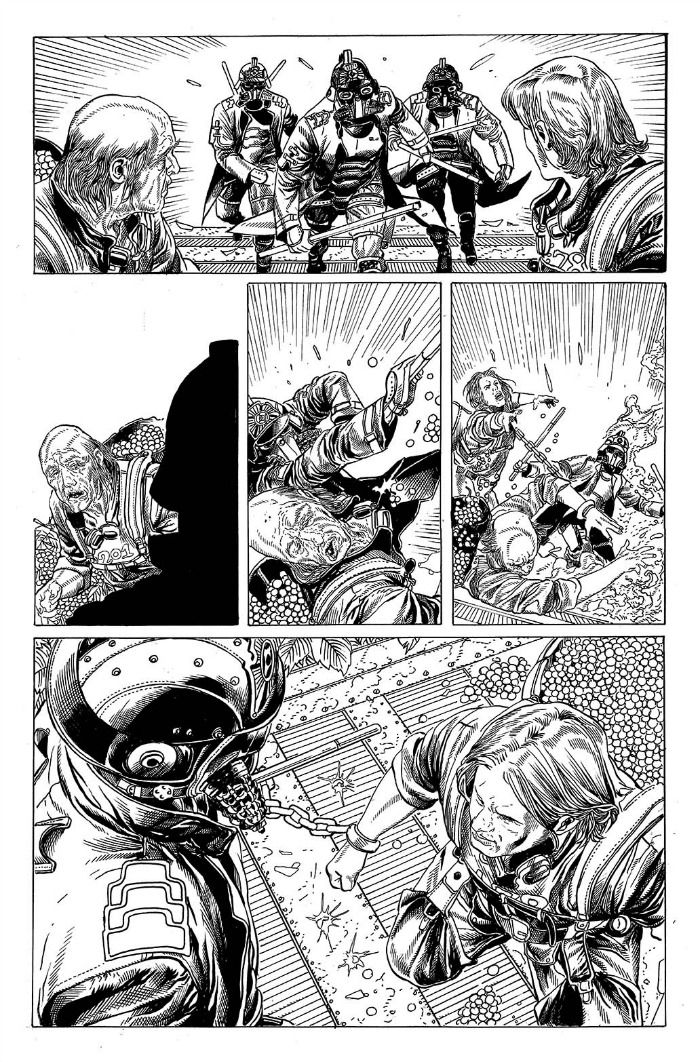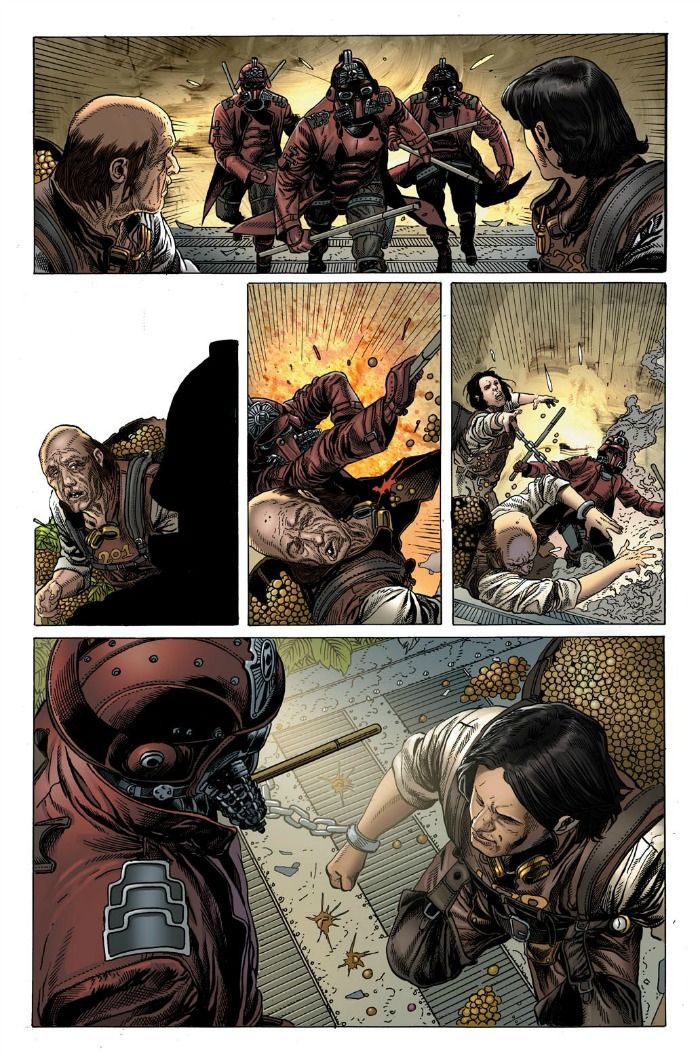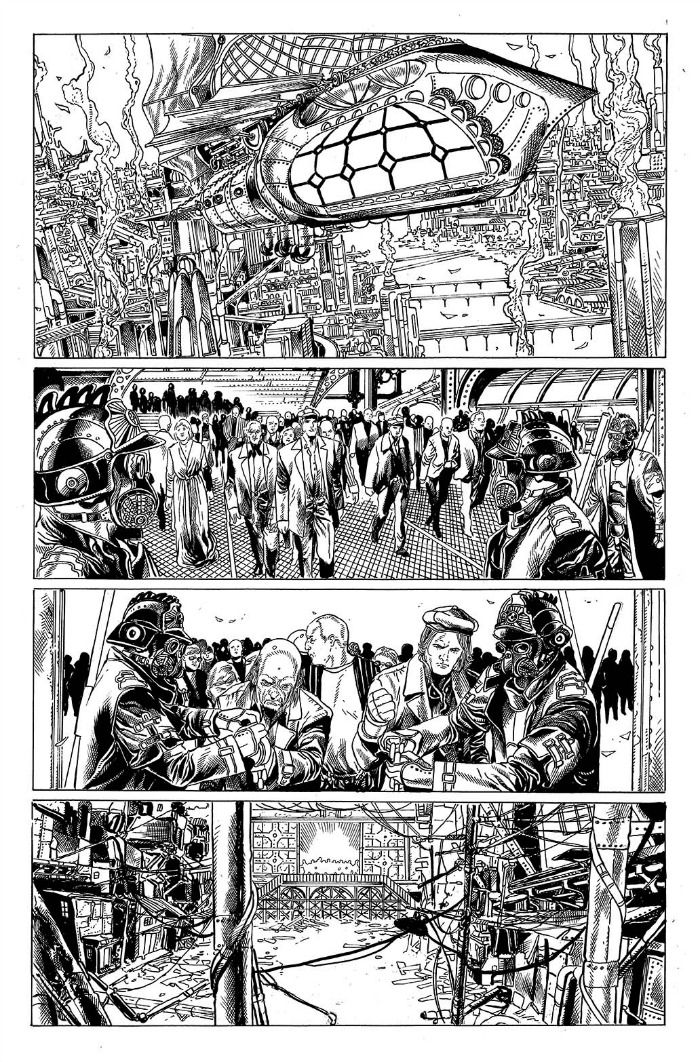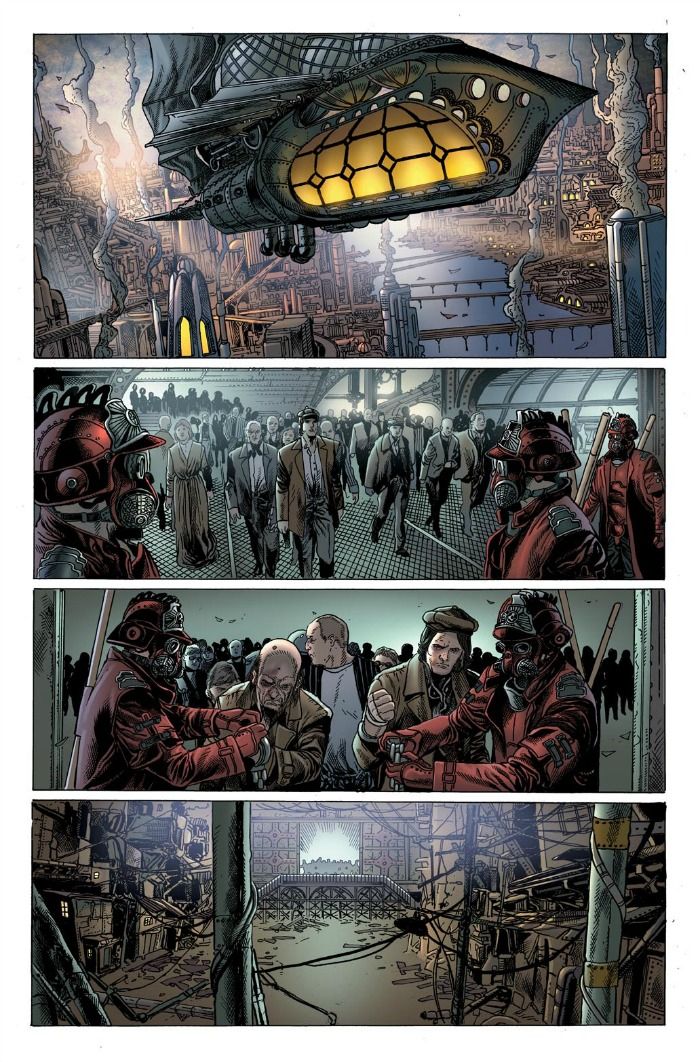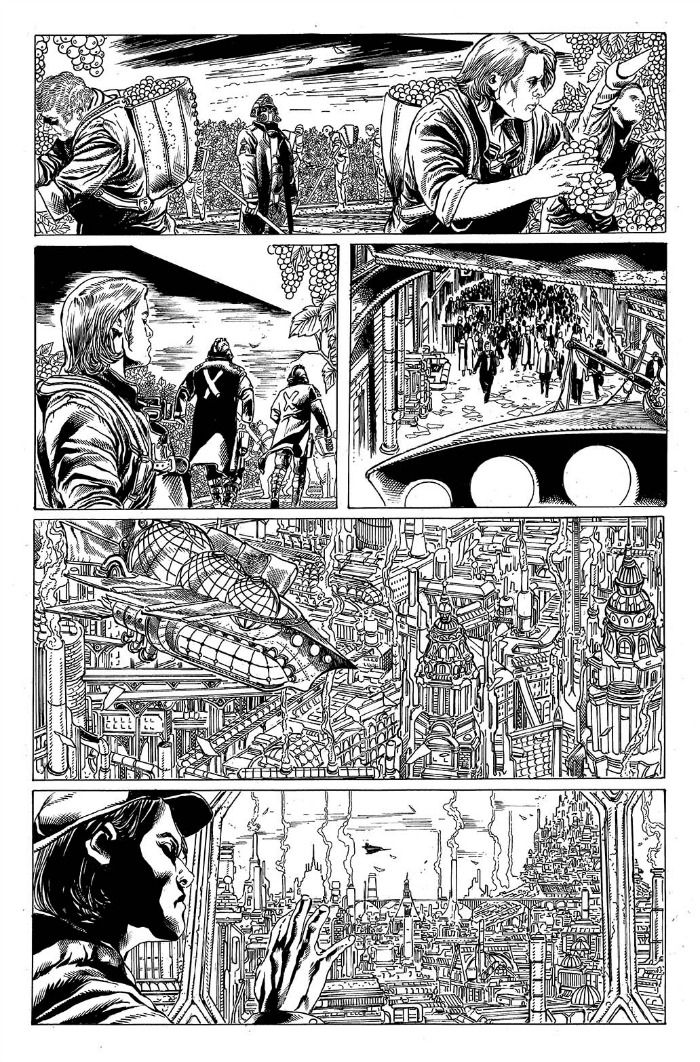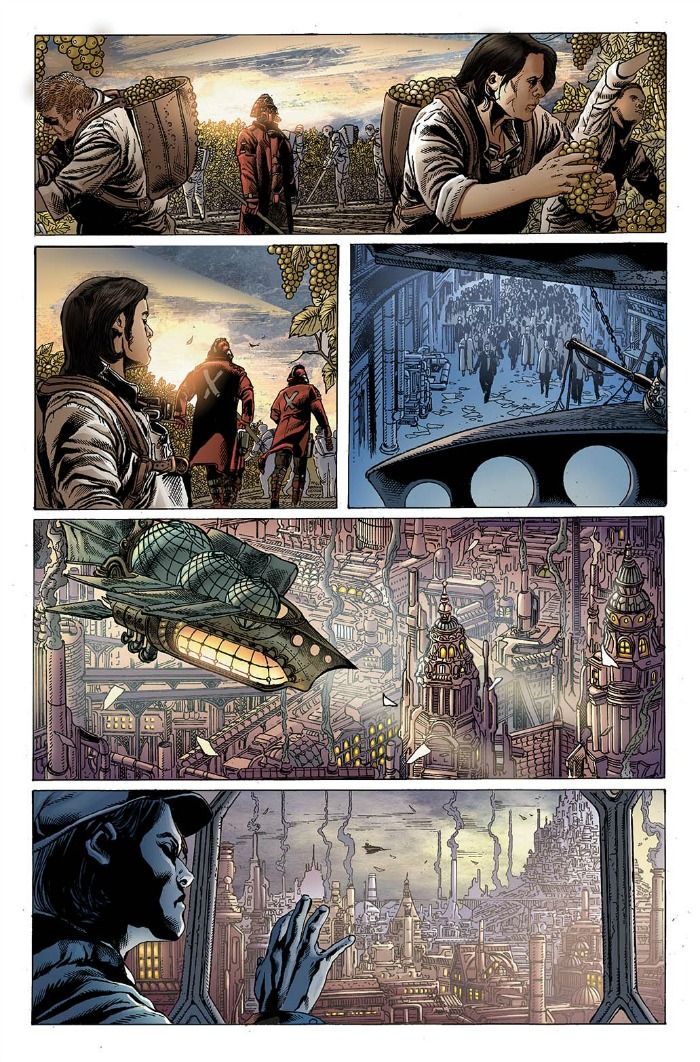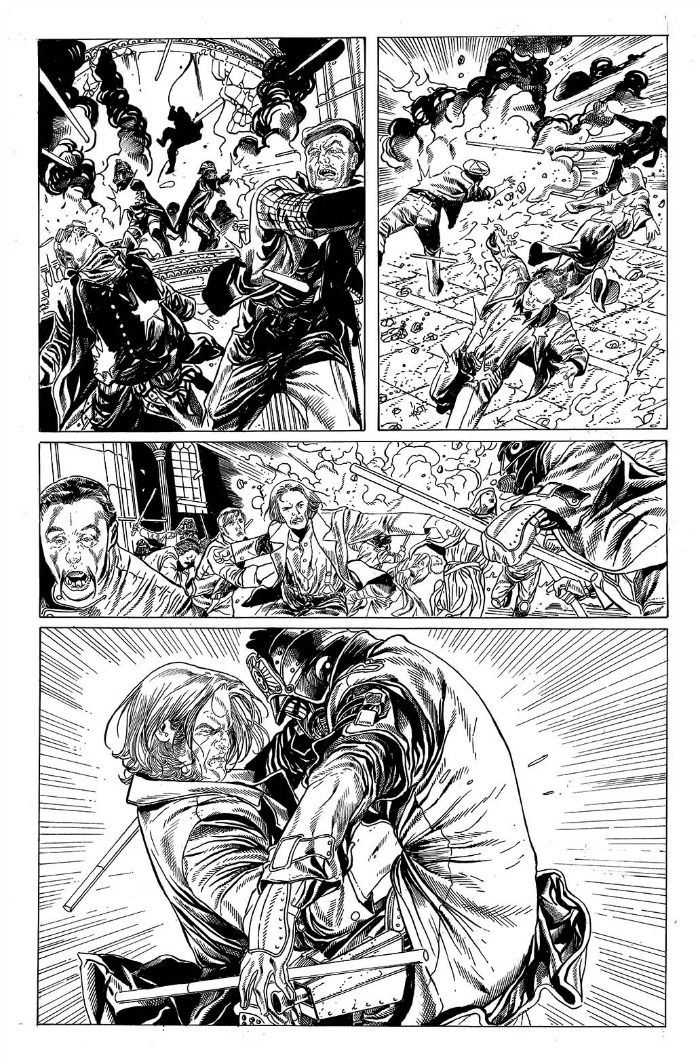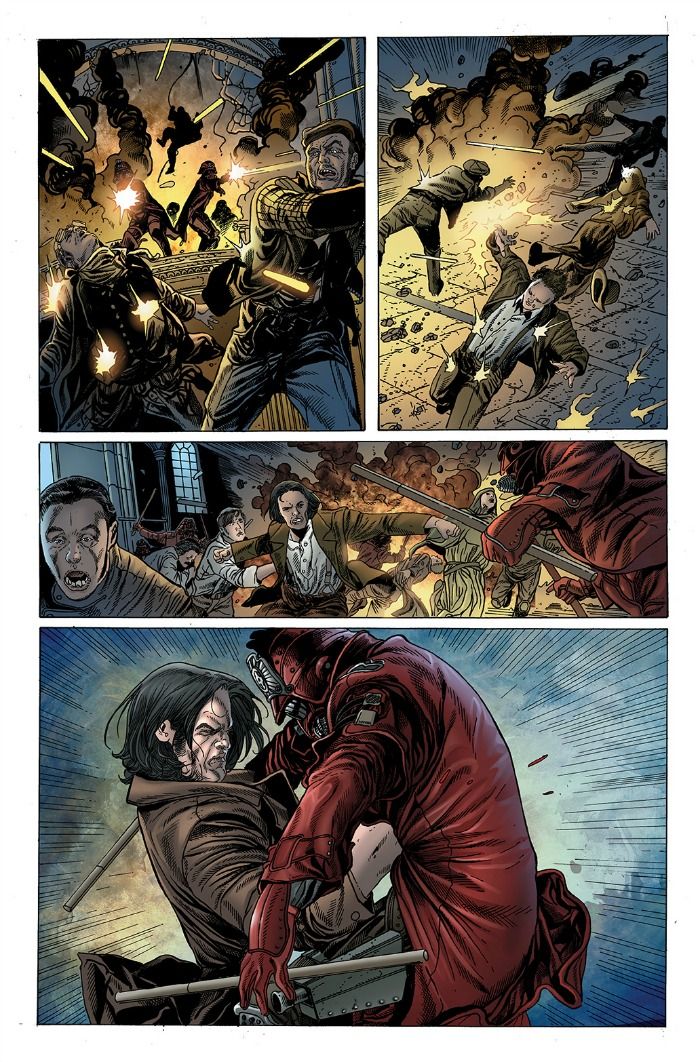Frequently spending 12 to 13 hours a day to produce two pages, Lantern City artist Carlos Magno devotes a lot of his attention to detail. It's readily apparent in every panel of the upcoming steampunk series from Archaia.
Part of a broader multimedia property that includes a novel, an app and a planned television series, Lantern City centers on Sander Jorve, a family man who seeks to improve his lot in life. When his activist brother-in-law convinces him to infiltrates the ranks of the brutal Guard, Sander is set on a dangerous path.
Debuting May 13, the comic was created by Trevor Crafts, Bruce Boxleitner and Matthew Daley, and written by Daley and Paul Jenkins. In this interview with ROBOT 6, Mango opens up about his career journey, how his martial-arts past informs his fight scene choreography and his admiration for Chris Blythe's coloring (previewed in this interview).
Tim O’Shea: How enjoyable is it to pursue a project like Lantern City, which is clearly a departure from your recent well-received RoboCop work?
Carlos Magno: One thing is for certain about my work with BOOM! Studios: They gave me some of their best books to work on. When I started working on The Planet of the Apes, I was already a big fan of the movies and books, since I was a kid. It was my chance to enjoy the freedom the publisher gave me to create a whole new world. With Deathmatch, it was the same thing. Paul Jenkins and I created a wonderful universe and I had a chance to draw superheroes the way I always imagined.
When I was offered RoboCop, I didn’t think twice because I've always been a big fan of the character and to work on him was extremely challenging. But I was only to work on the series until issue #8 because BOOM! had another book to pitch me. I was in New York last October when my editor Ian Brill said that [BOOM! Editor-in-Chief] Matt Gagnon wanted to meet me to tell me about the new project. We were sitting at a table in the restaurant at his hotel when he started talking about Lantern City. Matt is an extremely savvy editor and he knew I would love the book. My response was immediate: “I'm in!” Lantern City reminded me of something I was working on two years ago. In fact, that work had been a test, in a sense, for Lantern City — the city design, the characters, everything. I'm loving working on this book and with an equally wonderful staff. Lantern City is a dream come true.
I love that you're getting to draw interesting and detailed backgrounds such as city landscapes and dirigibles. Am I right in thinking you love to dive into visual elements in stories that allow you to feature more of your exquisite ability to render detailed scenes?
You are right. It is the dream of any artist. Diving into such a complex and visually engaging universe is always a challenge. I work 12 to 13 hours a day to draw two pages and I think the big secret for any artist that spends so much time working is constantly seeking different things to draw. I always try to place elements that catches the reader's attention: an unusual situation, a different character in the foreground, etc. And yes, my pages tend to be always pretty detailed, so as to portray the very complex world we're about to see. Even when I'm working in inks, I always add new things to be discovered.
What about the steampunk aspect of the story appeals most to your creative instincts?
I think it's that classic blend of the old with the new. Much of the visual aspects of Lantern City will be reminiscent of previous steampunk stories, such as weapons, costume design, and even furniture. But during the process of realizing the first issue, all of us—the creators, my editors and myself — decided to give it a more modern look, something like what is you see in Blade Runner. The large towers that form the big city resemble more the architectural design of modern science fiction than steampunk itself. This was important to the visual context of the book, because we were taking an important step beyond steampunk. I think we're breaking barriers and creating something entirely new.
Can you explain what the keys are to creating some of the dynamic fight scenes that figure prominently in the first issue?
Well, a long time ago, I was a kung-fu fighter on the Brazilian team. I almost achieved a black belt, but I abandoned it after suffering a knee injury. That was just before I became a comic book artist. But years of training were put to good use, because up until today I design all the fight scenes as realistically as possible. I know very well how to portray the real effect of a punch to the face, or what happens when you break an arm or a leg. And I know how to portray on paper what that pain is like. The important thing for any artist or even a writer is to feel what they are portraying, otherwise it is an eternal copy of a copy of a copy.
What do you appreciate about Chris Blythe's coloring of your Lantern City work?
Chris is spectacular. When my editor, Mary Gumport, sent me the colored pages, I spent two days admiring his work before I got back to her. Chris understood the whole mood of the story. He put the right color in all the right places and really made the pages beautiful. I really like my black-and-white material, but Chris’ colors are a great addition to the book. When I saw Chris’ work, I knew Lantern City will be a great success.
How did you come to start working at BOOM!/Archaia? What appeals to you about working with the publisher?
It all started in 2005. I was working for the Brazilian advertising market when I was called by DC Comics to draw Jonah Hex. Almost no one knows this, but I was supposed to have been the first artist for the series when the character resurfaced. But unfortunately, things didn’t work and I ended up being replaced.
At that time, I was working with Joe Prado, an art agent, and he was asked by BOOM! Studios to suggest an artist for an eight-page story. It was a hilarious story written by Mark Waid called "If You’re So Smart" for the Zombie Tales series. I illustrated that story.
But it was not until years later when my relationship with BOOM! Studios ramped up. By that time, I had done work for Marvel, DC Comics, and IDW. I was in New York when I met Matt Gagnon. Matt is a great guy and he checked out my portfolio and loved it. A few months after that meeting, Matt sent me an email offering me Planet of the Apes. The rest is history: Deathmatch, RoboCop and now, Lantern City. BOOM! has always given me a lot of creative freedom; I’ve always done everything I always wanted to do.
After almost five years of working with BOOM! Studios, I feel like I’m part of the family. I find this to be very rare because usually, the relationship between artists and publishers is extremely professional. I think I’m very lucky to have such a good relationship with everyone at BOOM!. They are all my friends.

